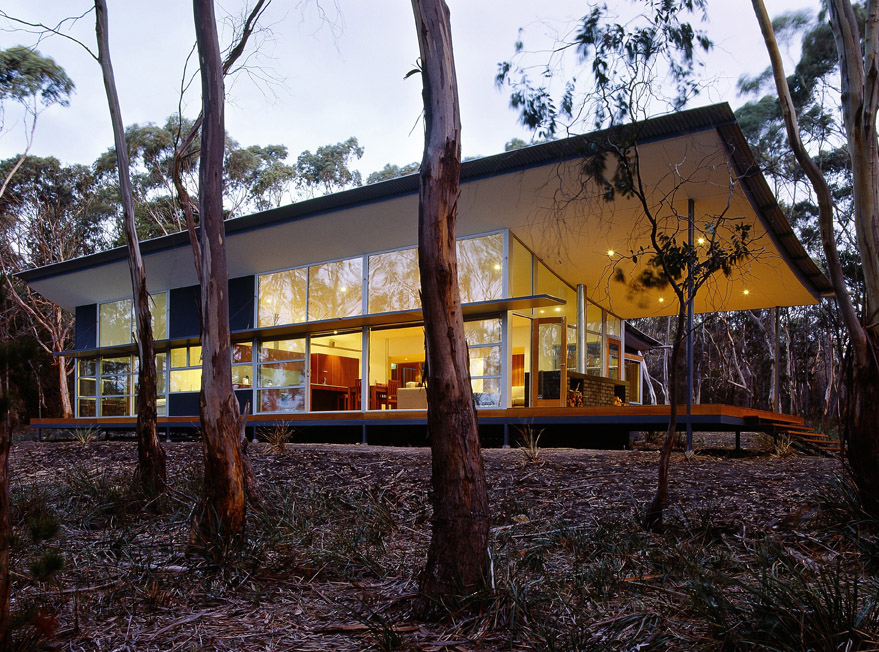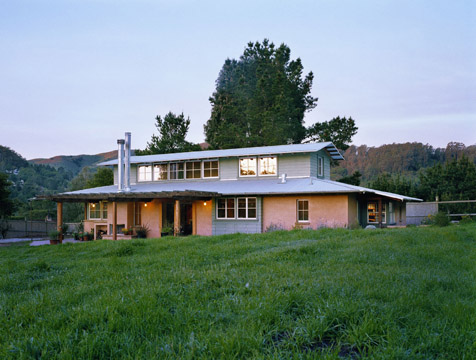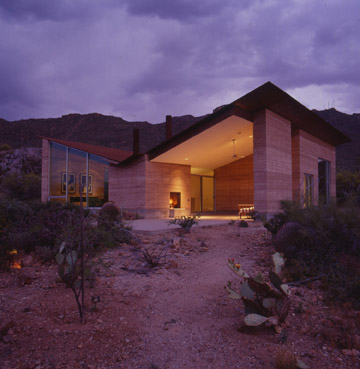“The Green House” Not Quite Mainstream (Yet)
Camille LeFevre reflects on the reputedly "mainstream" trends toward eco-architecture and sustainable design--both issues at the center of a traveling exhibit at the U of M's Rapson Hall, "The Green House"




It’s been less than three years since the National Building Museum in Washington, D. C. opened its eco-exhibition, The Green House: New Directions in Sustainable Architecture and Design. And already the seeds of both environmental activism and our collective inaction have borne new fruit. Eco-awareness came to unprecedented mainstream attention with the sleeper hit documentary, An Inconvenient Truth written by Al Gore, which won an Academy Award. But heightened public awareness can do little to stave off the stark consequences of climate change already in progress. In the same short span of time since “The Green House” debuted in 2006, as a result of devastating ice-melt which is shrinking their arctic habitats, polar bears were newly listed by the federal government as a threatened species.
Global economic shifts are already pushing even affluent countries like ours toward more “sustainable” lifestyles. We’re spiraling through a worldwide recession, fueled at least in part by wasteful spending habits. The desire for cavernous, shoddily constructed McMansions has crumbled under the weight of additional financial burdens that accompany their purchase—the struggles simply to pay to heat them and to hold on to them once the smoke and mirrors of no-money-down subprime mortgages give way to the reality of climbing interest rates and monthly payments. The U.S. electorate’s growing awareness of these problems was reflected in its choice this past November: President Barack Obama was elected on a campaign platform embedded throughout with specific commitments to alternative energy and initiatives promoting national environmental responsibility.
And yet how aware, really, is the general populace of its daily energy use? How much is each family cognizant of the tangible global impacts of their food, clothing, housing and fuel choices? Beyond the bromides and token gestures, are we really educated about what we can do? Beyond changing light bulbs, recycling, riding bicycles instead of driving cars, eating local and organic, composting food scraps, turning down the thermostat—do we really know what it will take to dramatically reduce our collective carbon footprint? And, just as important, will we be able do so without the going-green lifestyle costing us a lot more money?
According to The Green House, a traveling version of which is on exhibit in Rapson Hall at the University of Minnesota until March 8, we’re all fairly aware of residential sustainable-design strategies. As I wander through the show, I’m not so sure that’s true. “With the mainstreaming of sustainable design….” begins one panel’s description, which right away pulls me up short. I’m not convinced that sustainable design is, in any meaningful way, mainstream yet. Another panel further claims, “The sustainability movement is reaching maturity and wider acceptance.” Really? We’re already there?
Sure, my uncle built an adobe house of mud bricks. Two friends have installed energy-efficient furnaces. Various neighbors now heat with wood, have added insulation, installed double-paned windows, started composting, use low-flow plumbing, have native plantings, rain gardens and vegetable plots. And who hasn’t replaced their light bulbs?
“Home is where going green begins—where we as individuals have the power to set a new course for a more sustainable future,” reads still another panel. According to the exhibition info, the United States accounts for 22.8 percent of the world’s total energy use, one-quarter of which is used to power houses, mostly in cities.
So, our small changes are making a difference. But, certainly, it’s not enough. I have yet to see solar panels and geothermal heat pumps attached to every house or a Prius in every drive, or all those wood-frame structures built in the 1880s converted to zero-energy consumption.
Even if we know we should, even if we want to—who has the money? What middle-class family can afford the upfront costs of sustainable technology right now, no matter the long-term economic and environmental gains?
Even if we know we should, even if we want to—who has the money? I, for one, can’t afford the upfront costs of sustainable technology right now, even with the long-term economic and environmental gains. But one can dream. And to some extent, that’s what The Green House is about.
The majority of the show includes images of modern, sustainably designed houses. These exemplary homes blend the clean lines and airy, light-filled spaces of contemporary architecture with green maintenance systems, construction, and materials. A high-rise apartment building in Santa Monica uses photovoltaic panels to collect energy (and panels themselves are decorative, as they create a deep-blue, tile-like design accent). There are houses constructed of rammed earth in Arizona, straw bales in California, bamboo in China, and concrete block in Mexico. There’s also a lot of steel and glass, perforated metal, and wood shutters.
A Dutch prefab component called PARASITE—Prototype for Advanced Readymade Amphibious Small-scale Individual Temporary Ecological dwelling—offers a chilling portent for the kind of dwellings that may lie in our future if we continue our wicked, wasteful ways: PARASITE actually latches onto an existing structure. Architect Michelle Kaufmann narrates a video about her Glidehouse™ in California, also a prefab-style dwelling, but hers is a welcoming modernist structure of glass, metal and wood.
The examples cited in Green House are organized by geographic region—mountainside, waterside, tropics, desert, suburb, cities—while accompanying texts and graphics aim to illustrate the construction and climate challenges of each area. The exhibition succeeds in demonstrating how and why the eco-housing efforts of the 1960s and ’70s—with structures built into hillsides, laden with bulky solar panels, or constructed of unsightly refuse—are now passé.
The message here is: modern design and sustainable design are no longer mutually exclusive categories. But mainstream? Hardly. Put this traveling show in Home Depots across the country (The Home Depot Foundation supported this exhibition), next to green products like the bamboo plywood, agricultural-waste composite board, and low-voc paints, stains, and varnishes with which the exhibition is hung; alongside that, supply info on government rebates for installing sustainable systems in homes. Then we might see sustainability move from the affluent fringe to Middle America.
What: The Green House: New Directions in Sustainable Architecture and Design
Where: Rapson Hall, University of MN, Twin Cities Campus
When: On exhibit through March 8
There will also be a special discussion “Sustainable Housing Research and Practice,” Monday, February 23 at 6 pm, led by John Carmody, director, and William Weber, senior research fellow, Center for Sustainable Building Research